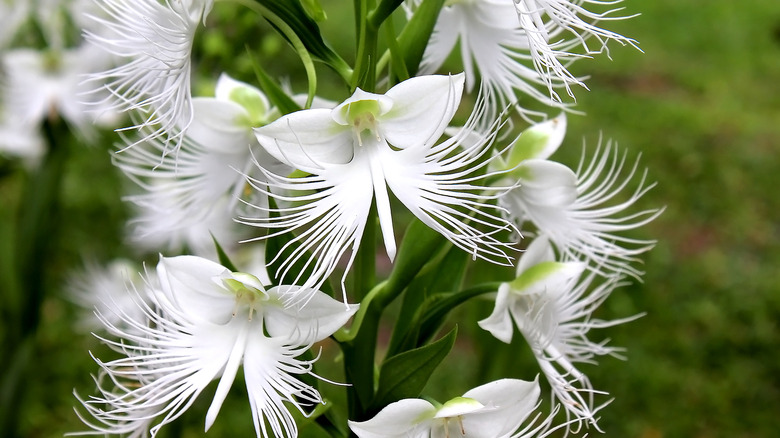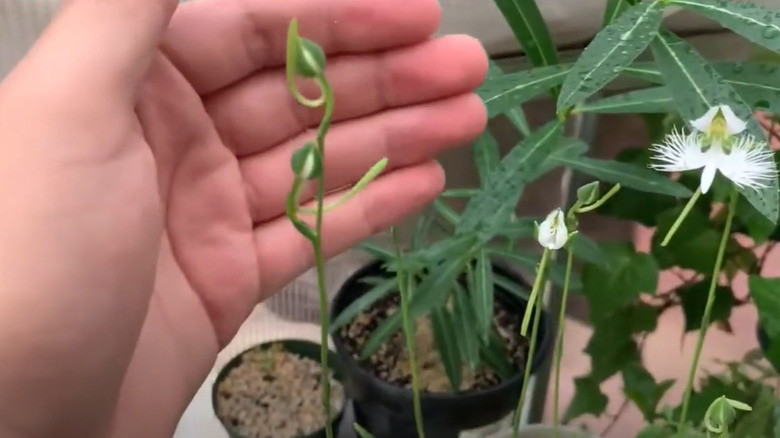How To Grow And Care For A Beautiful White Egret Flower Indoors
We may receive a commission on purchases made from links.
If you're looking to bring a unique and delicate bloom into your indoor garden, the white egret flower (Habenaria radiata) is an extraordinary pick. This exotic plant, also known as the fringed orchid or crane orchid, comes from East Asia and is famous for its intricate, pure white flowers that look just like a tiny, graceful egret mid-flight. Its frilly petals spread out like wings, making this plant a true show-stopper and a lovely accent for any indoor space. While growing a white egret flower requires a bit more attention than your average houseplant, the beauty it brings is well worth the extra effort of learning how to successfully care for indoor orchids.
To grow a white egret flower indoors, it's helpful to understand its specific needs for light, humidity, and temperature. This flower belongs to the orchid family, so it thrives in a very particular environment that mimics its natural habitat. If you provide the right setup, it can bloom indoors beautifully. Typically, the white egret flower goes dormant in winter, and new growth begins in spring, bringing those stunning flowers by late summer to early fall. With a bit of patience and care, you can keep it happy and watch this indoor blooming plant brighten up your home.
Caring for white egret flowers indoors
White egret flowers thrive with bright, indirect sunlight -– placing them near a south-facing window with filtered light works well. These delicate plants are sensitive: Too much direct light can scorch leaves, while too little light may prevent blooming. Aim to keep temperatures around 65 to 75 degrees Fahrenheit during spring and summer, with cooler evening temperatures to encourage flowering. Avoid sudden temperature changes or drafts, as these can disrupt growth.
For soil, choose a well-draining mix like orchid bark, perlite, and a bit of peat moss, which keeps roots airy and prevents rot. You can also buy Better-Gro Special Orchid Mix. During the growing season, keep the soil lightly moist but not soggy, allowing water to drain thoroughly. As fall approaches, reduce watering to let the plant enter dormancy, allowing the soil to become almost dry to simulate its natural rest period. Humidity is also key for this flower, which thrives in levels around 60 to 70 percent. You can maintain this by using a humidity tray, a small humidifier (like the ROSEKM Mini Humidifier for Plants), or occasional misting. Be sure to also provide good air circulation to prevent mold and other fungal issues.
When fall arrives, the white egret flower enters dormancy, shedding its leaves. Stop watering completely and move it to a cool, dry place at about 50 degrees Fahrenheit. In early spring, gradually reintroduce warmth and humidity to encourage new growth, setting the stage for its stunning blooms by late summer.

